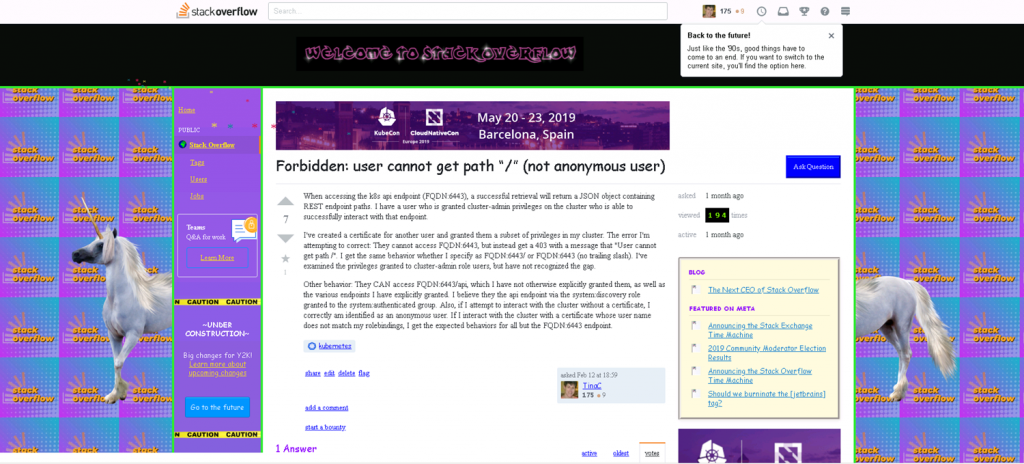Folks who are paying closer attention to this blog than it warrants may have caught notice of a link in the left navigation to a ‘Kubernetes 101‘ presentation. That link came about when I was asked a year or two ago to give a presentation at work on Kubernetes. I built the presentation deck based on a presentation I’d put together at a previous company which they were kind enough to give me access to again, and THAT presentation was a recap of some training materials I’d built out for a customer. So, I’ve gotten to present on Kubernetes a few times.
I’m now on my third project making use of Kubernetes, or k8s for short. The first go-round, I helped developers understand how to deploy things to it and someone else stood up and maintained the cluster. The second project, I built tools (“operators”) to run within k8s, as well as built scripts that automated the deployment of our clusters. This go-round, we’re using a new k8s distribution, with its own tooling for deployment and administration, and part of my role is to figure out whether our team found all the bits I’d been able to turn on in previous installations. (Auditing, for the record, is a good thing…). With each new project, k8s has matured and my angle for working with it has changed, so I get to learn and try new things.
That’s generally how software and systems development works… no one (or at least, vanishingly few) ever really knows a tool or language inside and out completely, particularly in connection with its full ecosystem. I’ve gotten to write Golang, Ansible, and Java (via k8s’s client-sdk). I’ve used REST APIs invoked via curl or hit the same endpoints using kubectl and its command syntax to interrogate k8s internal state. I’ve figured out how to query Prometheus using PromQL, and then how to interact with a time series database to which we’d exported the Prometheus data. Oh, and with each new release of k8s (they’re about to release 1.18), the capabilities and APIs change.
I got to interview an internship candidate today, and she (yay!) asked me what sorts of things you have to know to be a good candidate for our company. I told her a few of the technologies our current interns are using, but tried to make clear that the biggest thing about a career in technology is that you have to keep learning. That you have to keep humbly realizing you don’t (and can’t!) know it all. That you keep plugging away at deepening and widening your experience. That sometimes your experience tells you to bring in someone whose breadth and depth hits the problem from a different angle than your own.
Today was a fun day. Can’t wait to see what projects 3, 4, … and n, in k8s or other things, bring my way.
